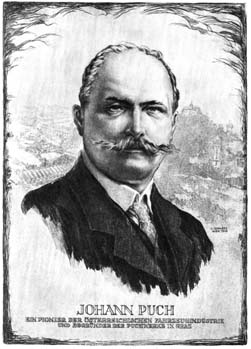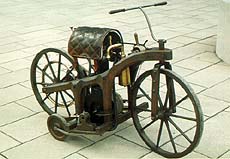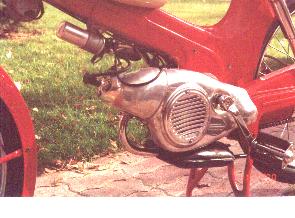What is a moped really and where does it come from?
To answer this question, one needs to go back to the early days of the bicycle and the invention that revolutionised the 20th century - the internal combustion engine. Put one of these into a coach and you have an automobile; mount it on a bicycle and presto, you have a moped (MOtor+PEDals), the precursor of ALL motorcycles. The pedals were omnipresent on all, used both as a starter device and as emergency fallback on human power. As engine sizes got bigger and bigger, it looked as if the half-bicycle-half motorcycle mopeds were just a short-lived early development phase (like a tadpole) that progress simply left behind. History however proved it otherwise.
The moped's evolution can be broken down into 4 distinct periods: from the very beginning to the end of the first world war, the period between the two wars, the phase after WWII to the early '80s and finally today. We also have to define what do we call a moped: a cross between a human-powered bicycle and an engine powered motorcycle, equipped with a (usually) under-50cc gasoline engine (although some early models used 98cc displacements as well).
After the end of WWI, with Europe's map completely redrawn, the short period until the Great Depression of the '30s was not conducive to the developemnt of the moped. While motorcycle manufacturing boomed, largely fuelled by the rapid re-armament needs on all sides, it seemed that the low-cubic, low-speed moped would become extinct forever.
Except nobody factored in WWII. After the war ended in Europe, the demand for simple and economical (read: cheap and affordable), means of transportation skyrocketed. Nobody could afford a car, or even a motorcycle. Most factories were in ruins anyway. In Southern European countries, like Italy and France, people got around on bicycles. This was fertile breeding ground for the rebirth of the moped and also gave us the other Italian cultural icon, the scooter. Bicycle makers (most of which were also motorcycle manufacturers) all started offering small auxiliary engines for their bicycles. Motobecane, Peugeot, Ducati, Moto Guzzi all got into the act.
The first giant leap forward was the appearance of the Velosolex, a giant among the dwarfs. If you ever rode a Velo, either with its engine running or as a bicycle, you'll appreciate how well that entire machine was constructed. Originally equipped with a 33cc engine (later to grow to 42 then 49) it had a friction roller over the front wheel. You could engage-disengage the power with a lever. You had to help sometimes going uphill, but that was part of the experience.
The Solex became a genuine cult idol, and rightly so. Amazingly, after more than 50 years, it'still going strong.




